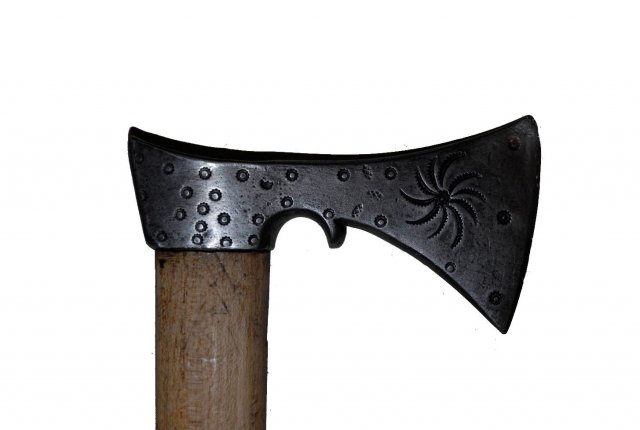The shepherd’s axe – “ciupaga” /tsiu-pa-ga/ |
||
|---|---|---|
Visual or audio material of objects, buildings and constructions, processes |
||
 |
 |
|
Description accompanying the visual/audio material
1910 POLAND Transhumance routes Poland, village Kościelisko, (the Podhale region). The object comes from the collection of the Tatra Museum in Zakopane (catalogue no E/4007/MT). The axe was made in the village Kościelisko. It was bought by the museum in 1929 from the Kuźmiów family from the village Nowe Bystre. |
||
The axe consists of a steel hatchet and a wooden handle. The hatchet has a vertical edge with a characteristic tongue at one side of the axe. The central surface of the hatchet is decorated with a rosette with the use of stamps. The axe has also a simple handle with an edge which is strengthened with thimble. |
||
W. Bratkowska, catalogue card from the collection of the Tatra Museum in Zakopane (catalogue no E/4007/MT), 5th May 1955 |
||
Pastoral life, pastoral tools, pastoral migrations |
||
